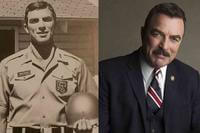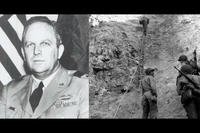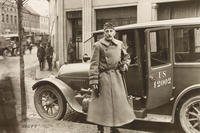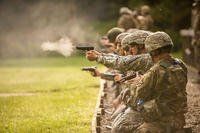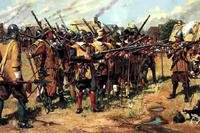When the National Guard its birthday, skeptics might ask the obvious question: "How can the National Guard be 140 years older than the nation, and exist more than two centuries before it popularly took on the name National Guard?"
Admittedly, a 1636 Massachusetts Bay Colony farmer would find the modern National Guard as unfathomable as the Boston skyline. But the Massachusetts militia's origin story forms the first thread in the patchwork of today's National Guard. The subsequent acts and legislation that followed constitute rebirths of a long-standing tradition.
From Militia Units to the Revolutionary War
In 1636, the first militia units in the New World organized in the Massachusetts Bay Colony under three permanent regiments. These militia units trace their lineage into the 17th century and through the Revolutionary War.
Militia involvement in the Revolutionary War marked a rebirth of the militia under the "United Colonies," eventually the United States. The colonists resented and feared a standing military force following the abuses of the British Regular Army. Given that history, the young nation's citizens understandably feared abuses of military power.
When George Washington argued in "Sentiments on a Peace Establishment" for a regular and standing military and a "well organized Militia; upon a Plan that will pervade all the States, and introduce similarity in their Establishment Maneuvers, Exercise and Arms," he understood much of the nation's distaste for federal military control.
The 1792 Militia Act, arguably the birth of the United States' militia model, was the outcome of this compromise. It gave the president powers to call forth the militia "whenever the United States shall be invaded, or be in imminent danger of invasion," but also provided state rule for training and the appointment of officers.
The Evolution of the National Guard
Throughout the 19th century, all free able-bodied men ages 18-45 were conscripted into local militia, divided in divisions, brigades, battalions and companies. Many of these units across the nation held varying standards of training, uniforms and organization.
Widespread use of the moniker "National Guard" didn't occur until after the Civil War. In 1878, the National Guard Association of the United States, or NGAUS, was formed to lobby for the National Guards of the states and territories.
The turn of the 20th century brought the nation's Progressive Era (1890-1920), which included various reforms to government and private industry, and the Guard was no exception. These included the Militia Act of 1903 -- the first sweeping revision of the 1792 Militia Act -- and the National Defense Act of 1916, which established training and organizational standards among Guard units across the nation.
In 1933, Congress amended the National Defense Act with the creation of the National Guard of the United States, a separate reserve component of the United States Army. This revision established training standards and sought to maintain unit integrity when National Guard units were called into federal service. It arguably created a militia force more in line with what Washington sought during the nation's founding. The House Report on the 1933 amendment concluded by saying, "It is our belief that the present bill conforms as nearly as possible to the ideals and principles comprehended by Washington in his magnificent statement entitled "Sentiments on a Peace Establishment.'"
In the post-World War II era, the National Guard expanded with the Air National Guard. It then saw its operations tempo greatly increase with the total force concept introduced after the Vietnam War and continued to evolve from a strategic reserve to an operational force in the post-9/11 era.
While skeptics are rational in questioning the 1636 origin date -- without them, the story of the many rebirths wouldn't be necessary for context -- the patchwork of the nation's Citizen-Soldier heritage undoubtedly includes the first stitching of those Massachusetts militiamen.

